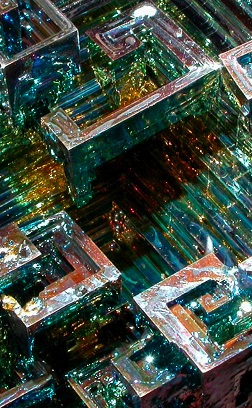Science heist bags crystalline secrets

Nature is able to build flawless diamonds, sapphires and other gems, but now humans are beginning to catch up.
A research team from the Northwestern University in the US has built near-perfect single crystals out of nanoparticles and DNA; using nano-materials as atoms, DNA as bonds and a touch of heat to form tiny crystals.
“Single crystals are the backbone of many things we rely on - diamonds for beauty as well as industrial applications, sapphires for lasers and silicon for electronics,” said nanoscientist Chad A. Mirkin.
“The precise placement of atoms within a well-defined lattice defines these high-quality crystals.
“Now we can do the same with nanomaterials and DNA, the blueprint of life,” Mirkin said.
“Our method could lead to novel technologies and even enable new industries, much as the ability to grow silicon in perfect crystalline arrangements made possible the multibillion-dollar semiconductor industry.”
The authors of a study published in the journal Nature say that when given a set of nanoparticles and a specific type of DNA, they can now accurately predict the 3D shape into which the disordered components will self-assemble.
A single crystal has a stunning order, with a structural lattice running continuous and unbroken throughout. The lack of defects gives crystal materials their sometimes strage qualities and high value.
In the new technique, strands of complementary DNA act as bonds between disordered gold nanoparticles - transforming them into an orderly crystal.
The researchers determined that the ratio of the DNA link’s length to the size of the nanoparticle is critical.
“If you get the right ratio it makes a perfect crystal - isn't that fun?” said co-author Olvera de la Cruz.
“That's the fascinating thing; that you have to have the right ratio. We are learning so many rules for calculating things that other people cannot compute in atoms, in atomic crystals.”
To make their self-assembling single crystal in the lab, the research team took two sets of gold nanoparticles outfitted with complementary DNA linker strands.
Working with about a million nanoparticles in water, they heated the solution to a temperature just above the DNA linkers' melting point. The solution was slowly cooled to room temperature over the course of several days. The slow cooling process encourages the single-stranded DNA to find its complement, giving birth to a high-quality single crystal approximately three microns wide.
“The process gives the system enough time and energy for all the particles to arrange themselves and find the spots they should be in,” Mirkin said.
“There's no reason we can't grow extraordinarily large single crystals in the future using modifications of our technique,” said Mirkin, who also is a professor of medicine, chemical and biological engineering, biomedical engineering and materials science and engineering and director of Northwestern University's International Institute for Nanotechnology.
The title of the paper is “DNA-mediated nanoparticle crystallization into Wulff polyhedra.”







 Print
Print